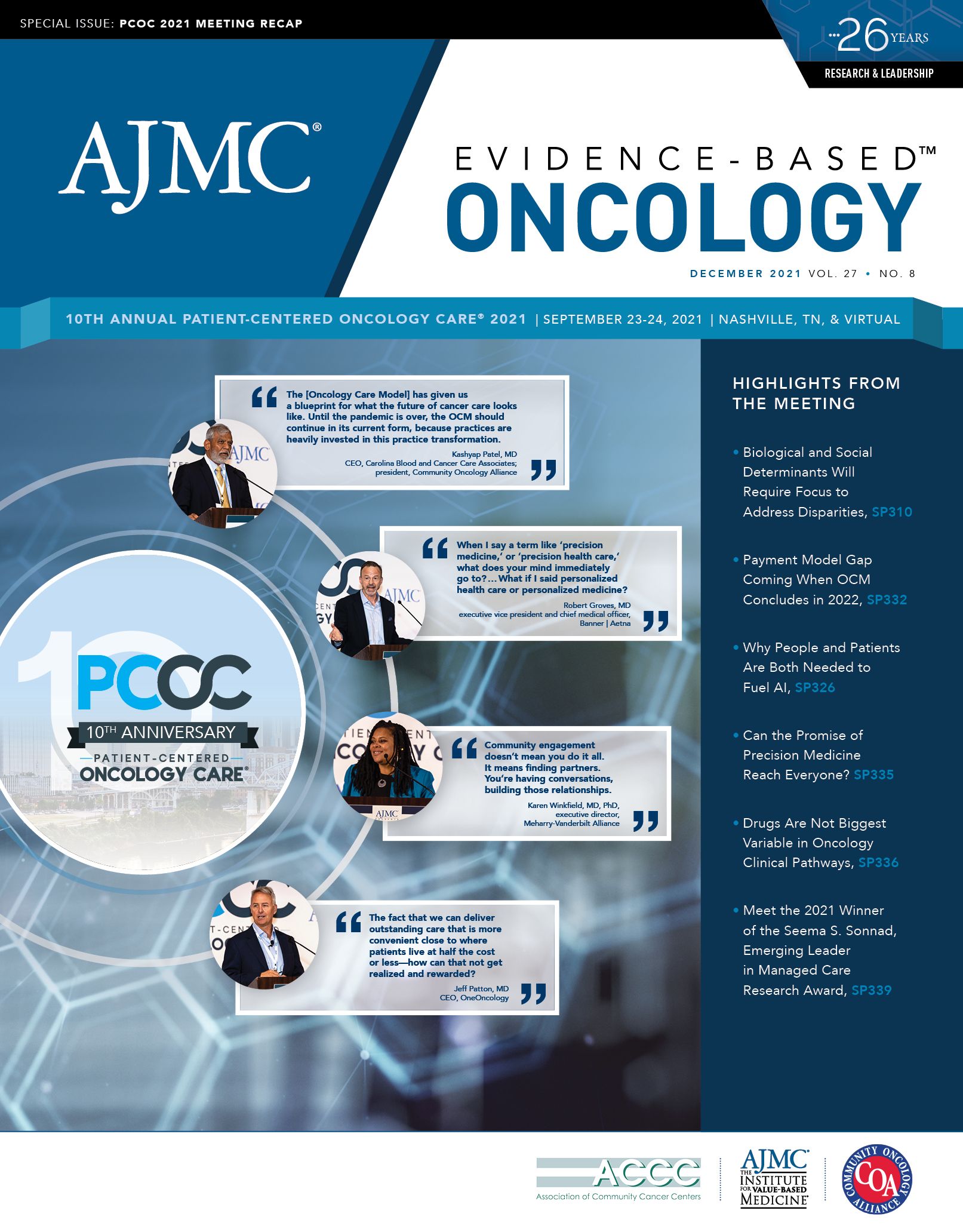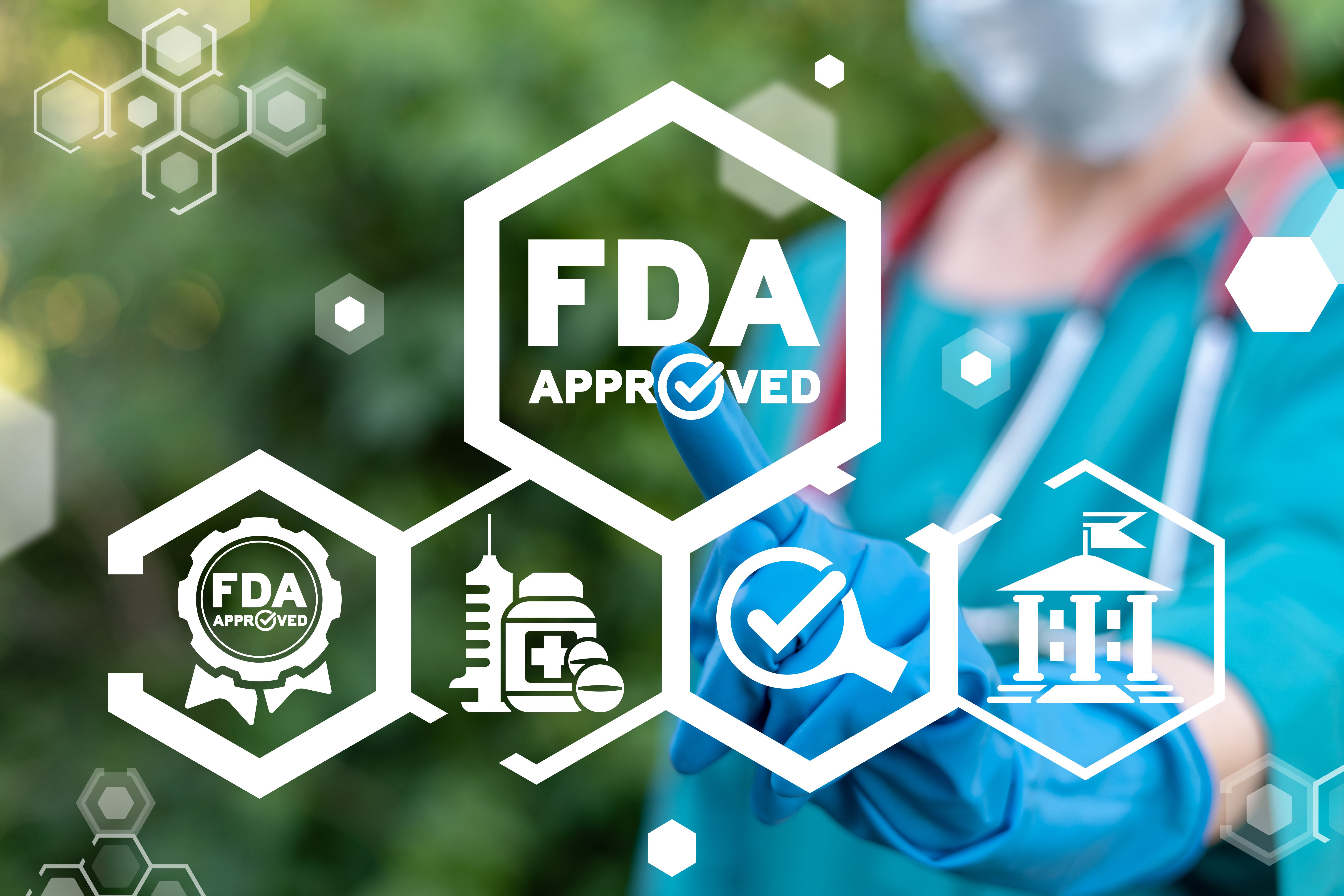Publication
Article
Evidence-Based Oncology
Community Oncology Leaders Find Silver Linings in the Pandemic
Author(s):
Debra Patt, MD, PhD, MBA, of Texas Oncology, and Lucio Gordan, MD, of Florida Cancer Specialists, MD, presented data from a study they conducted in partnership with the Community Oncology Alliance and Avalere Health.
Treating patients with cancer during a pandemic is not something Texas Oncology’s Debra Patt, MD, PhD, MBA, would have chosen. But she treasures what she and her colleagues have learned from one another. “This has been the toughest year, but it’s been so much better because we’ve all been in it together; we’ve enjoyed tremendous collaboration,” said Patt, who serves as executive vice president of health care policy and strategic initiatives.
Joined by Lucio Gordan, MD, president and managing physician, Florida Cancer Specialists & Research Institute (FCS), the pair presented an expert overview of the hurdles community oncology has had to overcome—along with the silver linings they have found throughout the COVID-19 pandemic.
Their session at this year’s Patient-Centered Oncology Care® meeting focused on the trends community cancer care has borne witness to since the start of the pandemic. They addressed key areas including the impact on cancer screenings, related services (eg, treatment delivery, billing frequency, biopsies, and surgeries), and evaluation and management (E/M) visits. Other
topics included how to navigate this new environment and the path forward.
“Navigating the COVID-19 pandemic was not for the faint of heart,” Gordan asserted. “Everybody suffered one way or another, and I think we’re starting to understand how bad it will be in terms of impacting overall survival in the future.”
The data Patt and Gordan presented—gleaned from a study they conducted in partnership with the Community Oncology Alliance and Avalere Health—painted a clear picture of how the pandemic has infiltrated all facets of community oncology. The subsequent barriers to care resulted in often precipitous drops in several key areas when comparing 2019 with 2020 numbers. “We wanted to have some idea of what cancer care was looking like during the pandemic,” Patt stated.
For example, from March 1 to April 1 of 2020, while the 7-day moving average and total new cases of COVID-19 were on a steady rise, totals for both E/M visits and breast, colon, lung, and prostate cancer screenings dropped 58.8% and 76.8%, respectively. From May 1 to June 1, 2020, there was a brief improvement in both as visits picked up—the drop in E/M visits improved to just 11.7% below the 2019 total and cancer screenings jumped to 6.3% above the 2019 number—but the declines were steady again through November 1, 2020.
Year-over-year declines were also evident in billing frequencies for new patient, established patient, and hospital outpatient E/M visits. Comparing March to November 2019 with March to November 2020, billing frequency declines were seen across the board. For the 3 types of visits, the largest declines were all seen when comparing April year over year: 67% for new patient visits, 55% for established patient visits, and 70% for outpatient visits.
Screenings for the 4 major types of cancer (breast, colon, lung, prostate) that Patt, Gordan, and their partners looked at also were consistently down; mammograms saw an 87% drop from April 2019 to April 2020. There were just 3 instances of gains: 17% and 5% for mammograms in June and July 2020, respectively, and 10% for prostate cancer screening in June 2020.
“You would have to increase screening capacity by more than 30% for more than a year to make up for the losses that you see today,” Patt pointed out. What these declines equate to is a long-term impact on treatment delivery in relation to reductions in infusion services, cancer-related surgeries, and
biopsies, she added.
A separate case study of 4 states—California, Florida, New York, and Texas—shows that each region’s COVID-19 levels and lockdown measures, or lack thereof, may have influenced health care system strain. In California, for example, cancer screening declines possibly indicate patients avoiding care compared with Florida, which had fewer restrictions and thus less severe declines in billing frequency.
Connected to these adverse effects on cancer care and services is the need for practices to navigate this new environment. Community oncology providers have learned to practice differently while implementing CDC guidelines and dealing with staffing shortages, promoting/mandating COVID-19 vaccination, and anticipating the now-upon-us flu season. Gordan touched upon all of these, detailing his experience with the nearly 100 sites
and 4500 employees of FCS.
“We tried to tackle this situation as educationally and scientifically based as possible,” he stated. Despite pushback, he said, the sharing of information really facilitated the high numbers and positive responses seen by FCS.
Since FCS announced its vaccine mandate on August 3, 2021, for employees, the vaccination rate has jumped from 54% to 84% and the adherence rate (vaccinated or has an approved exemption) from 54% to 94%. Patients were also surveyed via email, and close to 7000 responded. A majority said both that it was extremely important that their doctors, nurses, and staff are fully vaccinated (67%) and that they might change providers (56%) if staff were not vaccinated nor wore masks.
As a result, there has been a downward trend in COVID-19 cases except for an August 2021 spike due to the Delta variant, with all exposures occurring outside the workplace—a finding that demonstrates the success of the strict safety protocols (eg,«masking, hand hygiene, staff/patient screening, reporting exposure) FCS instituted across its sites, Gordan noted.
What are the silver linings from all this chaos? Telemedicine has evolved tremendously and now has a prominent place in care delivery. It now covers new and established patient visits, genetics consultations, advanced care planning, treatment planning and care coordination, pharmacy and nursing triage support, and virtual teams. “It’s also increased our ability to accrue and maintain patients on clinical trials,” Patt added.
Gains have also been seen in the palliative care space, with Texas Oncology instituting a palliative care pilot in rural locations staffed by palliative care doctors at their bigger sites, and in such patient-reported outcomes as symptom improvement, time on therapy, time to respond to patients, and overall survival, Patt and Gordan noted.
“Crises can’t go to waste, and we have shown that in community oncology,” Gordan concluded. Patt added, “We need to work together to ensure that community oncology is sustainable, because providing great cancer care to our patients and our communities is the best way that they can live on their terms. We will get through this together and be better for it.”
Reference
Patt D, Gordan L, Diaz M, et al. Impact of COVID-19 on cancer care: how the pandemic Is delaying cancer diagnosis and treatment for American seniors. JCO Clin Cancer Inform. 2020; 4:1059-1071. doi:10.1200/CCI.20.00134





